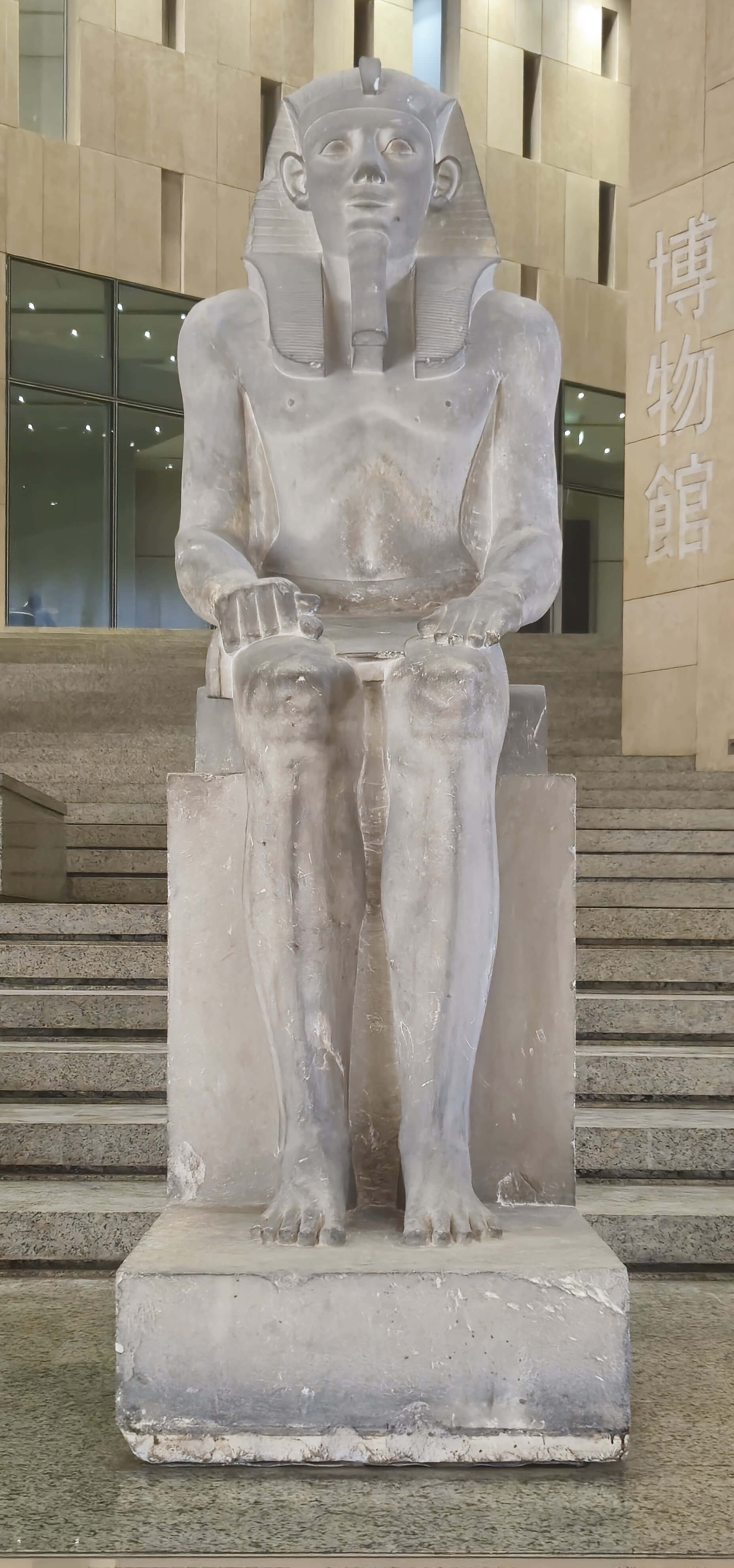
GEM 6757
King Senwosret I
In the pyramid complex of King Senwosret I, one of the most powerful rulers of the Middle Kingdom (12th Dynasty, c. 1965–1911 BCE), a recurring motif found on five of his thrones illustrates a deeply symbolic and religiously significant scene: the binding of the Two Lands by the Nile gods. On each side of these thrones are images of two deities—representing Upper and Lower Egypt—tying lotus and papyrus plants around the windpipe and lungs of the pharaoh, surrounding the Sema-Tawy emblem.
The papyrus plant symbolized the fertile Delta region of Lower Egypt, while the lotus represented Upper Egypt. The tying of these two plants around a windpipe was not merely decorative—it was a profound expression of the king’s role as the unifier of the Two Lands. The hieroglyphic sign, Sema-Tawy, meaning "Union of the Two Lands," often appeared in temple reliefs and statuary throughout the Middle Kingdom and later periods, visually reinforcing the idea that the king was the one who maintained balance and harmony in Egypt.
These Nile gods—often interpreted as forms of Hapi, the god of the annual inundation—represented more than jus ... Discover more with Premium!
Unlock the Full Story of This ArtifactUpgrade to premium to access the complete description, audio guides, and exclusive content for all artifacts.Access the full audio and description for the GEM's main artifacts for only $1.99
Looking For Another Artifact ?